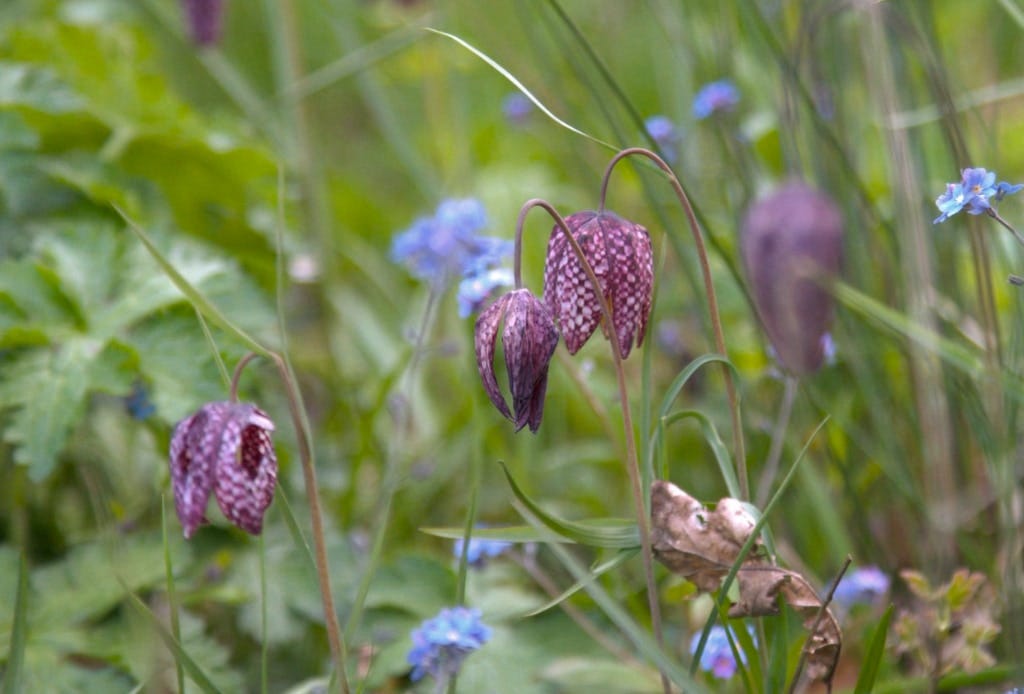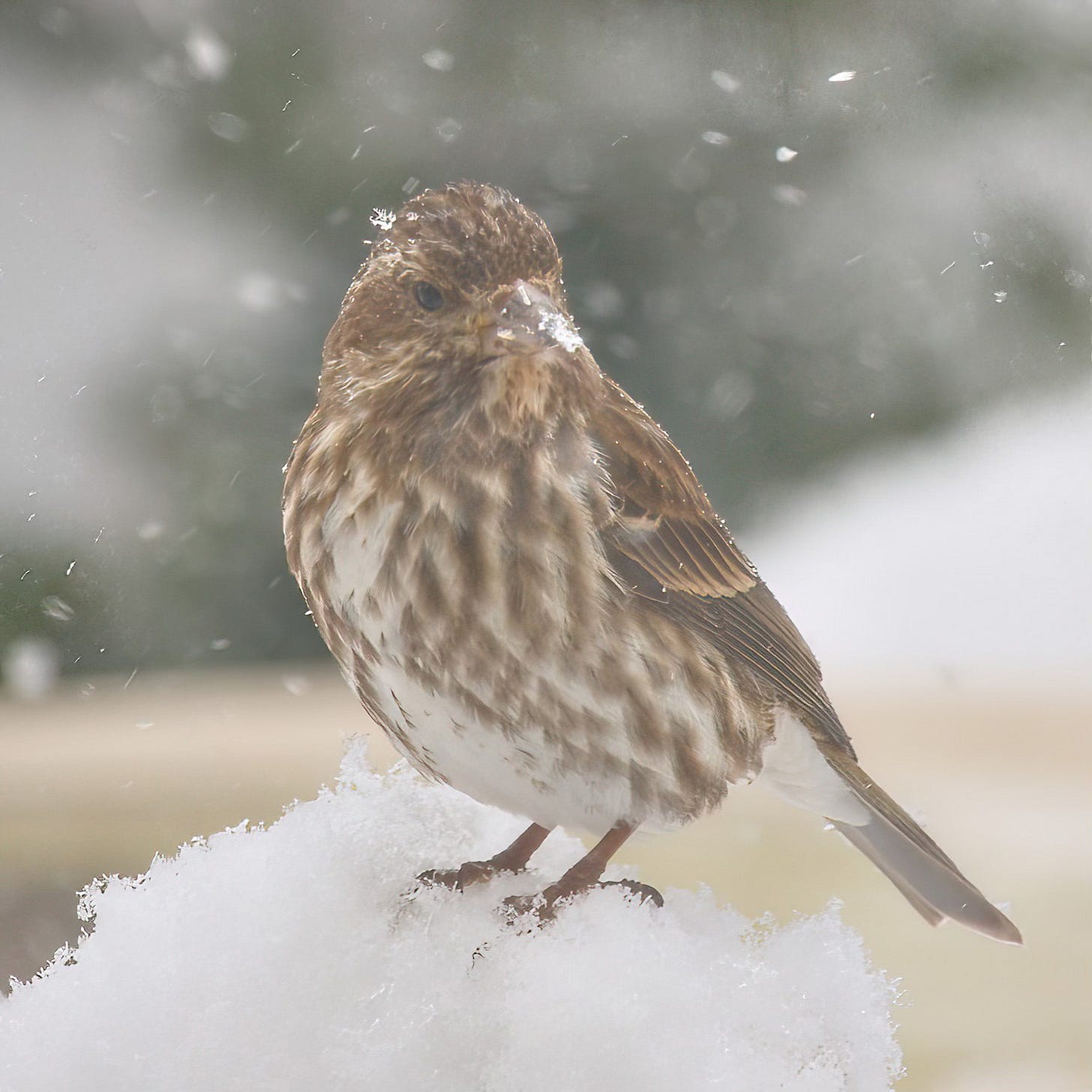“At any rate, spring is here … and they can’t stop you enjoying it. This is a satisfying reflection. How many a time have I stood watching the toads mating, or a pair of hares having a boxing match in the young corn, and thought of all the important persons who would stop me enjoying this if they could. But luckily they can’t. The atom bombs are piling up in the factories, the police are prowling through the cities, the lies are streaming from the loudspeakers, but the earth is still going round the sun, and neither the dictators nor the bureaucrats, deeply as they disapprove of the process, are able to prevent it.”
- George Orwell (of 1984 fame)
April Across the Pond
We are in those frustrating couple of weeks that start April. Recently, there has been some heat in the sun, crocuses and the very first scylla are flowering, the leaves of daffodils are poking through the leaf-litter and occasionally an early-arriving migratory bird passes through, eats some seeds we provide and then continues on its way - and then, mid-week a storm that started in Colorado arrived here and dumped lots of wet and heavy snow on us. But none of that, if further expanded upon, is sufficient to interest my readers. I could show you pictures of (yet more) American Robins, I could have shown you five, fine Buffleheads that were down on the river a few days ago just beyond a large raft of Canada Geese, only I didn’t have a suitable camera with me that day to capture their arrival. Spiders? Yes, I could do a couple more of those and even a woodlouse that scuttled out of view when I disturbed a detached piece of bark on a fallen log … but none of those is really all that terribly satisfying. So, let’s go wandering …
O, TO be in England now that April’s there,
And whoever wakes in England sees, some morning, unaware,
That the lowest boughs and the brushwood sheaf, round the elm-tree bole are in tiny leaf,
While the chaffinch sings on the orchard bough
In England—now!
- Robert Browning
This was the month in which we had intended to visit friends and relatives across the water for the first time since covid, but circumstances got in the way, as circumstances do. We have fingers crossed that we may make the journey in September or early October but then (those circumstances again), it could be spring of next year before we get there. However, we have made spring visits across the pond several times in the years since coming to Quebec a third of a lifetime ago and so, let me intrigue you by sharing a couple of iconic “April in England” species that we still rather miss, living as we do out here on the edge of the known world.
Bluebells
There is nothing even remotely like these glorious flowers in Canada … and they are becoming increasingly uncommon in England. Perhaps our closest would be a carpet of ephemeral Trilliums on a forest floor, furiously blooming before the leaves unfurl on the trees and cast them into deep shade. They will be here for us to enjoy in a few weeks, but meanwhile … Bluebell (Hyacinthoides non-scripta ) carpets like the ones in this photo are only seen to this degree in truly ancient woodland, often ones to which access is restricted.
Fritillaries
Once quite rare but now, due to conservation efforts, rather less so. At least, it is no longer endangered as a species because gardeners are now growing them though it is still rare in the wild - and that’s because it is a plant of ancient meadows, most of which were ploughed up and turned over to the production of food crops during the war, or more recently had housing estates dumped on them thereby destroying much of the plant's natural habitat. When I was five years old (long ago) an aunt gave me an album of pressed wild flowers that she had collected. I long ago lost the album but the one flower that stood out and which I remember was the Snakes-head Fritillary (Fritillaria meleagris). I later worked out that my aunt had - quite innocently - picked it from one of the few remaining wild colonies … it was a different world back then. I took the album to school - there was a contest to do with showing off our hobbies and interests - and I was awarded a prize of a five shilling postal order. Such riches.
Magpie
Yet another of those intelligent Corvid species, Magpies are highly adaptable birds. They are omnivorous and will happily eat a wide variety of foods, including insects, small animals, other birds’ eggs, and human food scraps … and those are just the less gross items on their menus.. They are famous for having a tendency to collect shiny objects, which has contributed to their reputation as thieves. In England, I remember a traditional children's nursery rhyme in which the number of magpies seen together is said to foretell good or bad luck. "One for sorrow, Two for joy, Three for a girl, Four for a boy, Five for silver, Six for gold, Seven for a secret, never to be told." which is as far as we ever got back in the fifties though I now learn the rhyme goes further … "Eight for a wish, Nine for a kiss, Ten a surprise you should be careful not to miss, Eleven for health, Twelve for wealth, Thirteen beware it's the devil himself.”
Greylag Goose
A rather smart, large, goose with distinctively orange bills and pink legs. They are the ancestors of most domestic geese and are found across Europe and Asia. Some populations migrate, others are resident year-round. Greylag geese populations have been increasing rapidly in the UK, with a 180% rise since 1995, though their growing numbers are creating challenges, as they can cause economic and environmental damage. The ones in this photo were found with others in a small nature reserve centred around former gravel extraction pits, now flooded, just outside the village of Fenstanton in the “lost county” of Huntingdonshire.
And then, locally …
A returned, and somewhat bedraggled, Yellow- shafted Northern Flicker. Mid week a big storm headed this way from Colorado and dumped a lot of late snow on us … now melting.
So now 🎺 Gardening Begins 😎 🌱
A few clumps of donated snowdrops “in the green” plus yellow winter aconites were planted. Getting them in the green at this time of year, rather than as dried corms in autumn, is by far the most reliable way to establish them though they are rarely available like that on this continent.
The first “cigars” of one of our stands of Sanguinaria were sighted. 🥳 Much as I eagerly await the snowdrops, it’s this plant that really says “spring”. Flowers before long.
It’s a start. Well, it was a start and then Thursday (see above) this happened …
Priorities (mine, anyway) -
… to cut a long story short, this particular Doonesbury cartoon continued for a couple of weeks. The elderly birder had gone to see his bird and suffered a fatal heart attack. It ends like this … which will probably do for me too 😉 What a way to go.
** The Bachman’s Warbler has recently been declared extinct:
https://www.bbc.com/future/article/20240402-bachmans-warbler-goes-extinct















I. I hate to be a contrarian, but who says we we are terribly dissatisfied by the small quiet things!? We are at all adrenalin junkies or need exciting, "on steroids" material. It's good to look peacefully at peaceful things!
2. Bluebells- they absolutely dominate one of our beds right now. Other perennials have to push up through all those strsppy leaves! My wife tells me we used to have fritillaries but they're long gone alas!
3. Flickers- one of our favorites! Sometimes I hear them before I can see them-.as they make their scuffling noises in dry leaves. They are definitely Royal Birds in our estimation!
4. Doonesbury- one could definitely do worse!
Those swaths of bluebells are fabulous, Richard - almost as it you were in the woods in Baie D'urfe at the community centre?! Hang in there, they're coming!